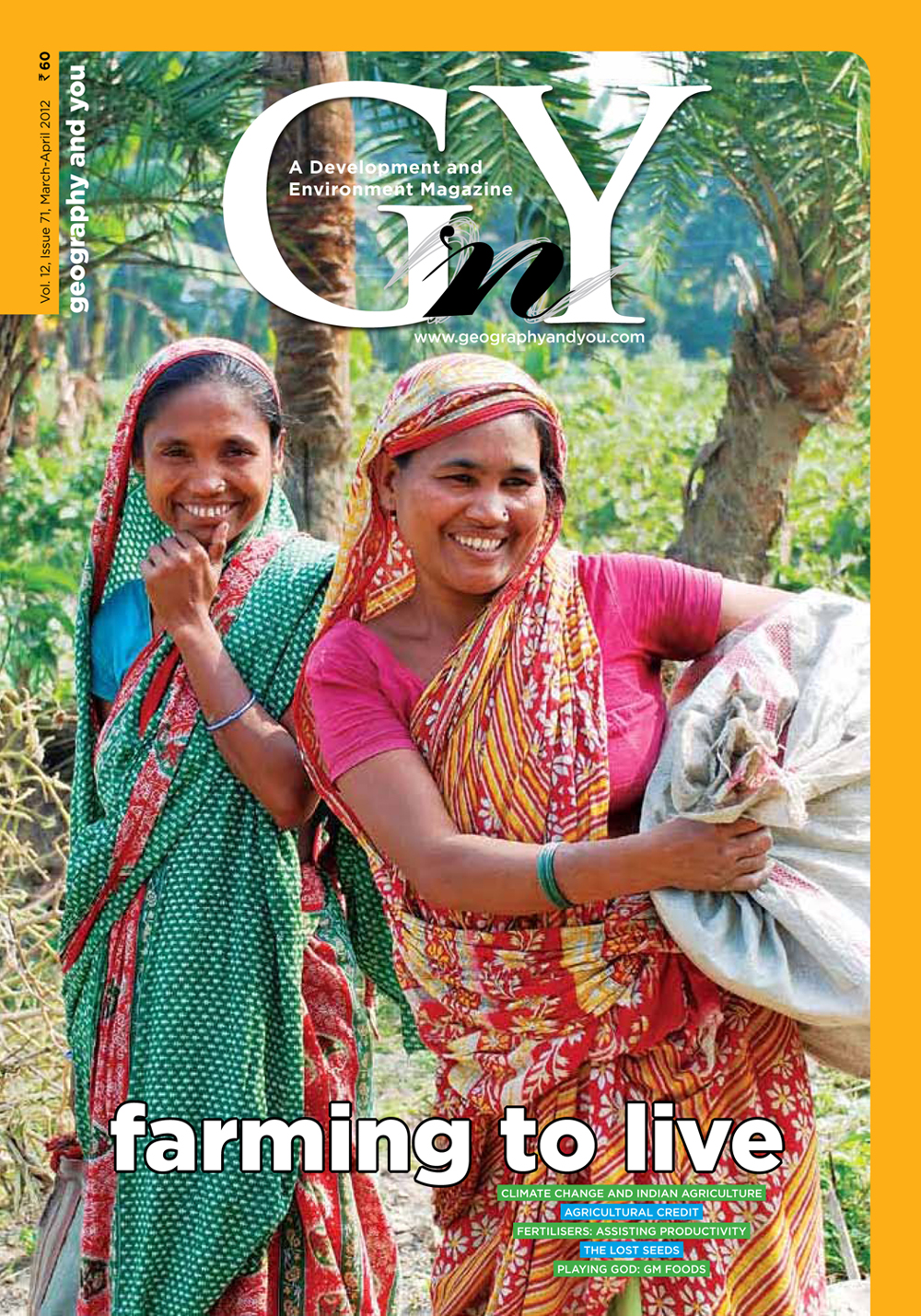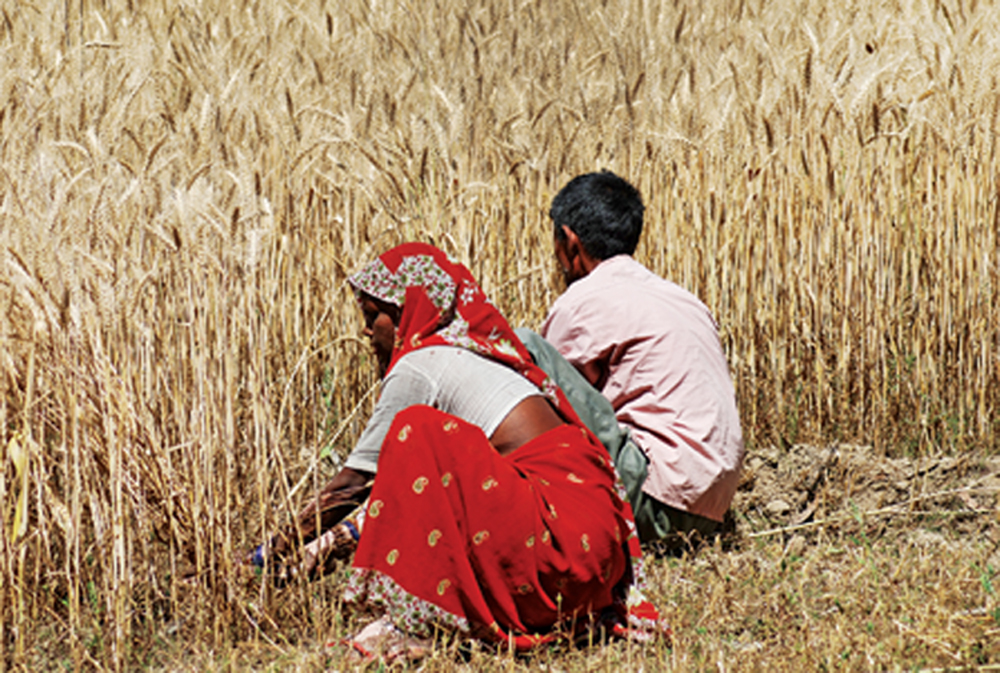
Inside this issue
Agriculture and climate change
Over 60 percent of India’s population depend on the agricultural sector which constitutes about 14.3 per cent of India’s gross domestic product, 2010-11, as per the Central Statistics Office, New Delhi. Despite technological interventions, about two thirds of India’s agricultural area remain rainfed and vulnerable to present day climate variability. The implications of climate change is yet not very clear, although scholars agree that global climate change will lead to greater unpredictability of weather conditions at local levels.
Apprehensions about climate continue to rise, despite our limited ability to make precise assessments of its impact. This is partially due to the complexity of chemical and physical processes at various scales and also due to confounding factors from other changes such as air pollution.
Forestry and Climate Change
An assessment of the impact of climate change on forest ecosystems in India has been attempted with the forest vulnerability index for India - worked out on the basis of forest canopy density, biodiversity and projected impact of climate change.
The urban environment of modern India has undergone dramatic changes predominated by concrete structures, congested commercial spaces and incessant traffic. The degeneration of living environment in urban areas has severely disrupted the balance of urban climate as tree cover is eliminated to make way for ‘development’.
Forests are one of the most significant reservoirs of carbon. Various global processes and anthropogenic changes are influencing the process of carbon sequestration leading to interruptions in the carbon flux. Under elevated CO2 conditions a possibility of decomposition occurring more than net primary production leading to a loss of carbon is predicted in the forest regions of India.
Fisheries and Climate Change
The adoption of a Code of Conduct for Responsible Fisheries and Integrated Ecosystem-based Fisheries Management (FAO, 2007), will be a challenge for India considering the high poverty levels prevalent in the coastal communities involved in traditional fishing. The lack of suitable alternate income generating options for them makes these communities highly vulnerable to future changes. Thus an effort to reduce their dependence on fishing is essential.
Climate change impact in the Sunderban ecoregion with rising sea level and accelerated coastal erosion is already evident in the Mousani Island and Namkhana, Bermajur and Sandeshkhali Blocks in the Sunderban. This is increasingly disrupting the production processes and the livelihoods of communities. It is thus essential to pave way for sustainable aquaculture practices that may help balance ecological processes and development at the same time.
Agro Issues
Agriculture credit is a loan or extension of credit provided by a bank for agricultural or allied rural use – one of the most crucial inputs for agricultural development.
With the onslaught of green revolution and now the advent of genetically modified species, traditional seed culture practices are slowly but surely dying-out. India’s vast biodiversity in terms of indigenous agricultural landraces require to be revived to ensure conservation and ultimately food security.
Genetic Modification is a process by which DNA of an organism can be altered to synthesise a new, usually better or more efficient version of the original organism. The breakthrough in science was initiated particularly in the field of agriculture, to improve crop protection through the use of one of the three basic traits: resistance to insect damage; resistance to viral infections; and tolerance towards herbicides. But, like all new technologies, GM crops also pose certain apprehensions and risks, both known and unknown.
Organic farming in India is a traditional practice. With the advent of chemical fertilisers, farmers chartered new paths to higher levels of productivity. With the ills of inorganic inputs now apparent, consumers in the global markets have turned towards organic food - yet again asserting its relevance.
The Indian agricultural scenario is experiencing a series of changes since the green revolution. Here is a brief essay that outlines concepts of how agricultural calculations are undertaken - agricultural productivity and efficiency, crop combination, degree of commercialisation, diffusion of innovation and more, to help comprehend the agricultural scenario with lucidity.
The increased use of chemical fertilisers in India came with the advent of Green Revolution in the 1960s. Introduction of fertilisers helped greatly to increase the food production in the country in a time when the agricultural sector was failing - as a repercussion to natural disasters. However, the continuum of the large scale usage is raising concerns about judiciousness and efficacy of chemical fertilisers in the present context.
India's Outdoors
A sleepy town in West Sikkim that is an epitome of rich heritage, natural beauty and culture - heaven on earth. Situated at an altitude of 5580 ft Rinchenpong is a fairly new but must go tourist destination.
The State is taking a keen initiative to explore and excavate sites that hold historical importance and at the same time Chhattisgarh is practising conservation and preservation of several sites with valuable historical credentials.
In brief
Dear readers, Almost every movie made in this country, has compelling discourses on ‘mitti ki saugandh’ or the pledge of mother earth - to protect, defend and worship our soil for an eternity. Nothing could perhaps be further away from the truth however - in the real world, we defy all lofty id

